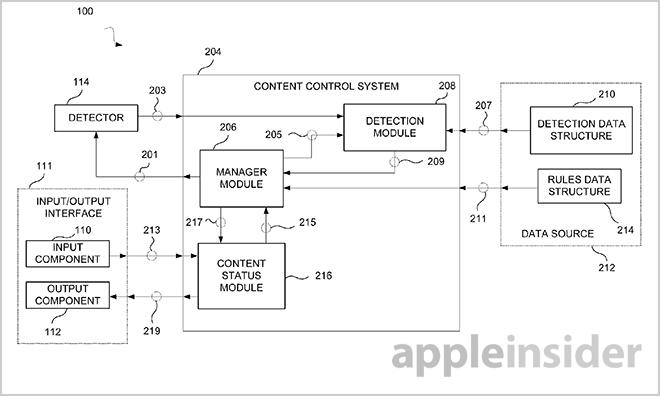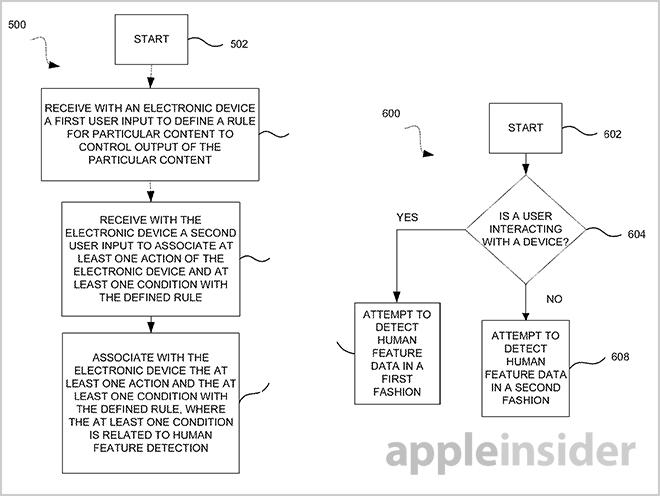Apple invention controls content access based on a person's physical features
An Apple invention filed with the U.S. Patent and Trademark Office on Thursday describes a system that can automatically perform media playback operations based on a human's features, like stopping an adult movie when a child enters the room.
The patent application, "Systems and methods for controlling output of content based on human recognition data detection," notes electronic devices, including portables, can play a host of digital media, the amount and variety of which has swelled to immense proportions thanks to the Internet. Many of these machines also have built-in sensors like cameras that can "sense" or detect the presence of human users.
Apple proposes that modern devices are advanced enough to detect a variety of user types, from children to the elderly, and automate media playback operations based on this information. Such a system would not only be a substantial contribution to data privacy, but also an easy and safe way to consume content.
For example, a user may "login" to an electronic device, access private emails, play an adult-rated movie, halt playing of the movie when a child walks in the room, and perform many other actions using the device depending on the circumstances. However, one or more manual actions must be performed by the user in order to accomplish each of these tasks and, oftentimes, the user may not even be aware that one or more of these actions should be performed (e.g., that playback of an adult-rated movie should be stopped because a child has stepped into the room).
According to the filing, a device's one or more sensors can collect data from its surrounding environment, looking for a human presence. Specifically stated as being an optimal on-board setup is a camera and infrared sensors to detect heat. The recognition data can be facial features, heat maps, voices or any other attribute that can be detected and analyzed. The recognized attributes are then compared against a set of rules dictating privilege levels.
More than one individual can be detected at a time. For example, three people standing in front of a computer can be recognized as an adult male user and two female children. The system analyzes and assigns privilege levels to these people, which are then used to determine what content can be accessed.
Content is also privilege-based. For example, a personal email or adult movie may be assigned a different status than a spreadsheet. In order to open a given file, certain conditions, such as age, must be met. Some embodiments allow for the playback of media or opening of documents if at least one privileged user is present, while others restrict access when at least one unprivileged user is present.
This per-user granulation allows for the dynamic control of content playback mentioned above. For example, if an adult movie is playing, one or more adult users can view the show. If a child is detected in the environment, the system immediately stops playback.
Alternatively, content presentation can be controlled based on assigned attributes. Elderly users may need louder volumes for video or audio playback, for example, but when they leave the room, the system can readjust back to normal listening levels.
In another embodiment, a user's speech is used to determine a media's presented language. The method even detects where users are located in a room, and will only adjust content playback when a distance threshold is breached.
The patent further details mechanisms required for the system to work, including the comparison of gathered human data against data stored in the detection module, user identity assignments and system management modules, among others.
Apple's human detection and control patent application was first filed for in 2012 and credits Michael I. Ingrassia, Jr. and Nathaniel Paine Hramits as its inventors.
 Mikey Campbell
Mikey Campbell












 Wesley Hilliard
Wesley Hilliard
 Andrew Orr
Andrew Orr

 Amber Neely
Amber Neely

 William Gallagher
William Gallagher

 Malcolm Owen
Malcolm Owen







